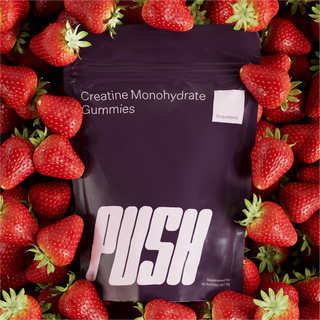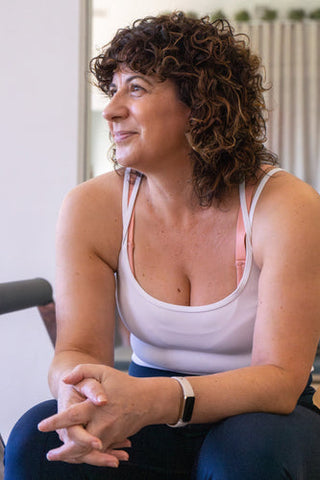If you’re new to barre, it can be a little daunting wrapping your head around the unique fusion of ballet technique and traditional fitness. When trying something new we often do our best to mimic the experts, whether that’s following along with a Master Chef’s cookbook or mirroring your barre instructors form. It’s a great and natural way to feel safe while you’re still learning.
However, in fitness, simply trying to mirror how your instructor looks is not always the best course of action. There are minute details that aren’t externally visible, such as which muscles are engaging and how the body is aligned. Not to mention all bodies are unique, so the correct form is going to look and feel different from person to person. That’s why we’re breaking down some of the most common technical areas barre beginners tend to miss so you can attend class feeling safe, confident and getting the results you want.
- Turnout
We’ve all seen professional ballet dancers who can stand in 1st position with their feet laying completely flat at 180 degrees. Your instructor may have similar turnout too. However, it’s important to keep in mind ballet dancers (and your instructor) have several years of training to naturally improve their turnout to this level. According to physical therapist Dr Teresa Volkerson:
“The best age range for building turnout-related flexibility is between 8 and 12 years old.”(i)

Most of us aren’t trying to improve our rotational flexibility as children, so if your turnout isn’t flat, you’re in the majority! The ballet world is highly competitive, and to make it professionally, having a 180-degree turnout is often favoured, despite being rare. As a result, many young dancers will force this position by stepping their feet into flat turnout, placing stress on their ankles and knees. Podiatric surgeon Dr John Brummer explains:
“If you continue to torque your feet, you could weaken the ligaments further, making you more susceptible to ankle sprains.”(ii)
So the message here is don’t over do it. Barre fitness is not an art form, and you don’t need to look pretty while doing it! Proper and safe turnout comes from a combination of rotational flexibility in the hips and strength in the glutes to maintain this rotated position, not your knees and ankles. Aleenta Health Club Instructor, Sascha, has a beginner barre class available on our YouTube channel which you can use to learn the barre basics and proper form. It’s a great video to have as a visual guide alongside this blog. Try her method of finding natural turnout in your next class:
- Start with your feet together
- Rock back on your heels and open your feet as you squeeze your glutes, creating a V shape.
- Wherever your feet naturally fall with this movement is the level of turnout that is safe for your body and is where you should always work from.
\
- Neutral Spine Alignment
The concept of a ‘neutral spine’ is something you will hear across the fitness industry, especially in Barre and Pilates. But what does it mean? Instructors often cue a neutral spine to encourage proper form. The easiest way to think about it is in a standing position. Imagine you are stacking your body parts to create a straight line: your knees stack over your feet, your hips stack over your knees and your shoulders stack over your hips. This is the basis of neutral spine alignment, but it goes much further than that, as we will explain.
The spine does have a natural curve, however, when exercising it’s important to level out this curve to keep our backs protected. Finding a neutral spinal alignment helps engage your supporting muscles, such as your core and glutes, which are interconnected with your back muscles. If you find you often have a sore back when working out, it’s possible that you aren’t engaging these supporting muscles, placing greater stress on your spine. Strengthening these trunk muscles is shown to improve back pain in scientific literature, such as this 2014 study on neutral spine control exercises in rehabilitation after lumbar spine fusion (iii).

In barre, it’s most common for beginners to fall out of neutral alignment when executing a plié. The tendency is for the pelvis to tip forward, creating a sway back, and sometimes causing the chest to drop forward. To find proper, neutral alignment:
- Slightly tuck your pelvis and think about drawing your pubic bone up toward your bellybutton. Your tailbone should point directly downwards when standing. This engages your core!
- Stack your shoulders directly on top of your hips. Think about lifting up tall and lengthening to the sky.
- In a hinge or non-standing position such as plank, think about maintaining one long line from the crown of your head to your tailbone; don’t let your spine dip!
Once you have found this alignment, the trickiest thing is maintaining it, especially as you get moving. Stay focused on these cues as you move through plié to ensure your spine stays neutral!
- Knee Alignment
The knee joint does a lot of work, especially during exercise, so it’s important we practice safe alignment to maintain its health. In all positions of a workout, you should not lock or hyperextend your knees. Physiotherapist Ritvik Verma explains that hyperextending the knee 5-10 degrees past its normal range places extra stress on your knees. Additionally:
“That extra stress comes on the ACL as the ACL in the knee prevents hyperextension. It keeps a check on the tibia that it should not travel too far forward on your femur. But in genu recurvatum [hyperextension], the tibia travels too far forward on your femur, the knee goes in a hyperextended position, so there is an increased risk of getting an ACL tear.”(iv)
Always keep a soft bend in your knees, and when you straighten your leg, think about pulling up through the quads and glutes, rather than pushing your knee back into a locked position. This is especially important if you have any hyperextension in your knees; locking into this hyperextension will gradually wear down the joint.
For flat-footed, turned out positions, a good way to remember correct knee alignment is to keep your big toe in view. Look down as you plié: can you see your big toe, or is your knee pushing forward and covering it? If the latter is occurring, there are a few possible reasons why:
- Your glutes aren’t engaged; think about squeezing your glutes together and pushing your inside thighs back.
- Your turnout is forced beyond its natural position; try making your V shape a little narrower.
- You are bending too far; don’t be afraid to work small, even if you don’t look the same as your instructor or mat neighbor. Remember, all bodies are different!
- If working in a wide position such as seconde, your feet may be too far apart. The ideal size for seconde is 2 and a half of your own feet wide.
- Your heels are lifting; unless your instructor has cued your heels to be off the ground, keep them firmly planted. This may mean you have to work in a smaller bend.

When working flat-footed in parallel, the same rule generally applies, although sometimes there are exceptions; your instructor should make these clear in their cues. For squats and pliés, you always want to keep your big toes in view and keep your knees pushing out rather than falling in toward each other. In a lunge, your front knee should always stack directly over your ankle and all toes should be visible.
- Relax your shoulders!
Many positions in barre can cause tension to creep into the shoulders, especially as your arm muscles fatigue. At any point in your class, whether you’re working the arms, legs, or abdominals, think about drawing your shoulders down your back and away from your ears. Some great images to help you achieve this alignment are:
- Imagine you’re wearing big, dangly earrings; you don’t want these earrings to touch your shoulders, so keep them relaxed and drawn down your back.
- Imagine your shoulders are like a waterfall cascading down your back. Keep the water flowing down!
Keeping shoulder tension at bay may not seem like a big deal, however, overtime you are causing your upper trap muscles to tighten as they take on the extra load. Drawing your shoulders back and down helps engage the other muscles in your upper back, providing additional support.
- Keep your elbows soft
When working on our hands in positions such as all 4’s, planks and pushups, it’s important not to lock your elbow joint. Just as locking out the knees can wear down the joint, the same applies to the elbows. Additionally, locking the elbows in these positions disengages the shoulders and upper back, which can increase the load on your hands and is why you may find your wrists quickly get sore. A great way to ensure correct elbow alignment is to keep your ‘elbow eyes’ looking at each other. To find your ‘elbow eyes’:
- Bend your arm and place your thumb in the crease that forms.
- Extend your arm straight, leaving your thumb in place; the location of your thumb is your ‘elbow eye’!
- Always ensure your elbow eyes are facing each other, rather than forward. This is done by softening slightly in the joint. Note that softening is different from bending!

With these handy tips, you can attend your first barre class feeling safe and confident, and come out feeling your absolute best! Don’t worry if you can’t remember them all, your instructor will be there to remind you and fix up any misalignments. Especially at Aleenta Health Club, every instructor makes an effort to provide personal guidance and corrections, so rest easy knowing that you are in good hands.
Loved following along with Sascha? You can check out more classes in her Barre Fundamentals Series on Me by Aleenta.
Ready to dive into your first class? Grab your exclusive 7-day intro offer here.
Written by Sascha Czuchwicki
Works Cited
(i) Dance Spirit. The Truth About Turnout. 30 September 2010. 25 September 2022. <https://dancespirit.com/the_truth_about_turnout/>.
(ii) Brummer, Dr John. Ask Amy: The Truth About Forcing Your Turnout Amy Brandt. Pointe Magazine, 11 October 2017.
(iii) Tarnanen, Sami P and et al. “Neutral spine control exercises in rehabilitation after lumbar spine fusion.” Journal of strength and conditioning research 28.7 (2014): 2018-25.
(iv) Verma, Ritvik. Genu Recurvatum (Hyperextension of the knee): Causes, Symptoms,Treatment. 2021. 25 September 2022. <https://physio-study.com/genu-recurvatum-hyperextension-of-the-knee/>.







